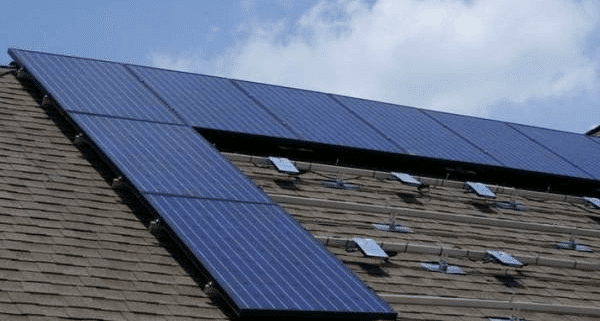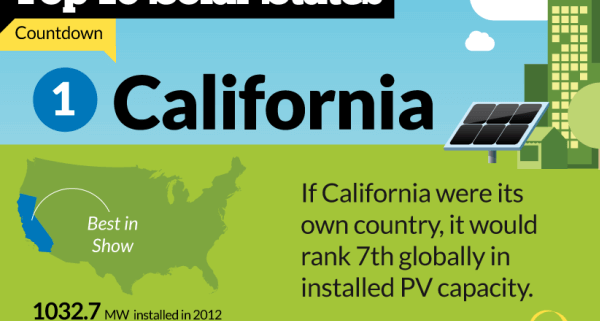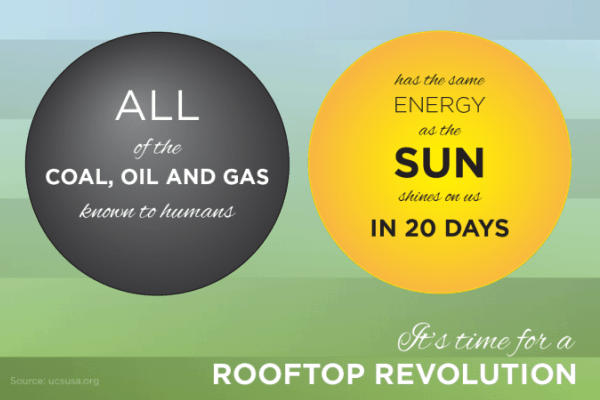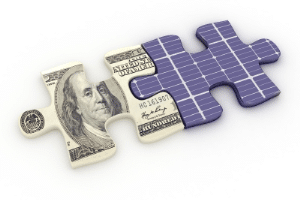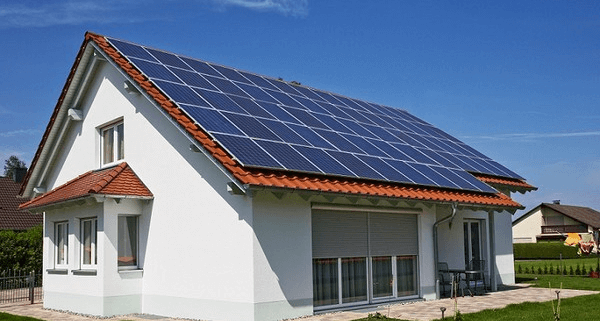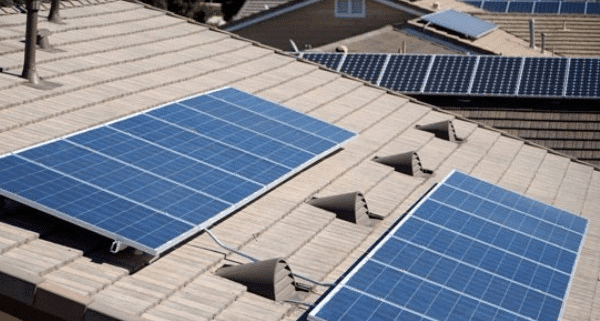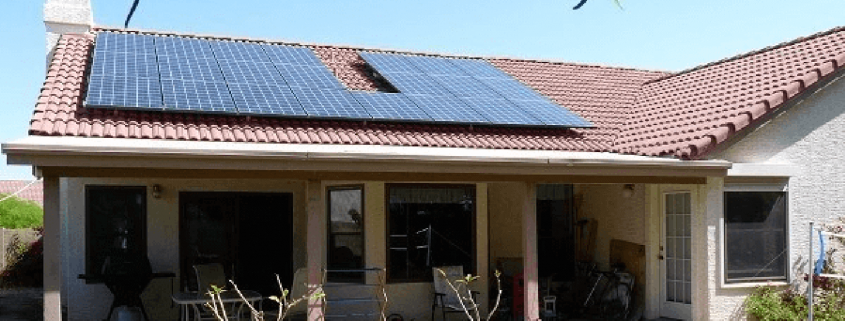Why Install Solar Panels?
Why Should you Install a Solar Electric system?
Hint: its not about saving money on your electric bills
Numerous Americans think solar energy is the greatest way to generate electricity. But when they get to the point of acutally installing their own system, they see the cost, compare it to their electric bill and their interest in installing a solar panel system often stops.
Yes, solar electric systems are expensive. Needless to say they cost more than power produced by huge coal and nuclear power plants along with being transported by high voltage utility lines!
Of the 69 solar electric system benefits, outlined down below, most do not improve solar energy’s payback period. Rather nearly all benefits, support the well being of the local comunities and the world. Thus installing a solar electric system is done all the for your community as for your own personal benefits.
Solar Electric Method Benefits to the Community
1. One of the most sustainable energy sources.
2. A magical way of making electricity – converting sunshine into electric power.
3. People love the idea; in a poll by USA Today, 91% prefer solar power along with other sources
4. A great educational tool for students and adults.
5. Buying a system supports development of brand-new energy technology and market.
6. Reduces exports of California’s funds with regard to out of state fuels.
7. Creates top quality California and United States jobs (36 jobs produced per MW installed).
8. Generates power during peak electricity consumption periods…
9. …Thus increasing metered reliability…
10. …Thus reducing the need to build power plants, as well as transmission and distribution traces infrastructure to meet occasional optimum power needs…
11. …And decreasing the utilities need to purchase the most expensive peak power (which has been traveling increases in Wisconsin’s electricity value increases over the last decade).
12. Creates clean power during summer time ozone periods, thus reducing ozone ranges.
13. Reduces coal firing inside of power plants…
14. …Thus minimizes need for coal mining along with transportation and its negative enviromentally friendly impacts.
15. Reduces our consumption of nuclear power…
16. …Thus reduces creation of nuclear waste, uranium mining, and the threat of leaked radioactive materials.
17. Reduces firing of gas main at power plants…
18. …Thus allowing natural gas to be used for more appropriate uses.
19. Reduces CO2 emission…
20. …Thus reducing the risk of global warming, and the great environmental changes many experience it causes.
21. Reduces NOx by-products.
22. Reduces SO2 emissions.
23. Reduces methane pollutants, a strong green house gas, coming from coal mines and the natural gas submission system…
24. …Thus reduces the risk of global warming (its cost every ton CO2 emissions reduced is close to that of a crossbreed automobile).
25. Reduces particulate by-products for coal fired strength plants…
26. …Thus reducing air quality issues and the related has an effect on of early human death (estimated cost in Wi 4.5 cents per kWh generated in California).
27. Decreases mercury emissions from coal emmisions from power plants (source of about 60% of the mercury pollution in California and the U.S.)…
28. …Thus reducing the poisoning of Wisconsin’s and the nation’s environment (e.g., fish). Produces no hazardous squander while operating.
29. With a 30-50 year life, panels steer clear of waste stream longer than most technologies.
30. PV products are normally safe for disposal, simply because PV materials are usually surrounded in glass or plastic-type material, and many are insoluble. (see the Department of Energy’s “PV Panel Disposal as well as Recycling” page.)
31. Diversifies Wisconsin’s electricity generating mix thus improving electricity security and reliability.
32. Unlike big power plants and transmission lines, solar electric programs are not a terrorist target.
Personal non-monetary benefits of Solar Panel Systems
1. Silent.
2. Fun to have.
3. Get to watch your meter go in reverse.
4. No need to purchase, move or fill with fuel.
5. A sign of a personal ethics, and good public relations for business owners.
6. An action to be proud of – be the first on the block to do it.
7. Makes your home or business “green.”
8. Systems can be done in a attractive way.
9. Once cells are up no one can build a structure that blocks your current sunlight. (Statewide act makes it possible for property owners with solar energy techniques to apply for permits guaranteeing unblocked access to solar and wind flow resources.)
10. Produces electricity, essentially the most useful and highest quality sort of energy that can be used to do everything from operating a pc or laptop to heating water.
11. Produce power at a quality that is often superior to what is delivered by electric powered utilities.
12. Highly flexible technology – PV produces energy wherever there is sunlight.
13. Together with batteries it can provide strength when the grid goes down as well as at sites without energy electricity service.
14. Simple modular technology that can be installed quickly.
15. Many ways to integrate in the human environment, panels on a roof or on a structured rack, tracking panels on a rod, PV sunshades (reducing building a / c load), PV shingles,
PV standing seam roofing, Photo voltaic flat roof (reduces cooling and heating loads), PV windows.
16. May be sited on underutilized areas such as roof tops and also brownfield sites.
17. The best way to generate city renewable power.
18. PV panels can be relocated to different sites for different needs.
19. A way to better understand the technology with the potential to be considered a major future power source.
20. A fantastic motivator to reduce your power usage through energy efficiency and energy efficiency.
21. Tunes owners into the way they use electric power.
22. Tunes owners into their natural environment.
23. It feels good to be part of Californias renewable energy community (
Personal Economic Benefits
1. Reduces or completely ends the monthly bills to your local electric utility company. Some people are usually even paid by his or her utility for excess creation.
2. As electricity prices increase solar electric systems owners will continue to save more and more money. Throughout 2010 alone four-out-of-five of California trader owned utilities have requested about 10% rate increases.
3. Solar panels should have a life of 30 to 50 years and warrantees of 25 years.
4. Thus Solar panels are likely to maintain their monetary value.
5. Once purchased the cost of the power it generates stays stable (i.e., no cost) for 30 to 50 years.
6. After it is purchased the costs associated with maintenance are low to none at all. (the only shifting part is the electrons).
7. There are several Energy incentives to help pay for systems.
8. Federal tax incentives help pay for commercial systems.
9. Sell your renewable energy credits for ten years.
10. Not as costly as they used to be – over the last two years installed cost has dropped by almost 25% in California.
11. Increases assessed value of home or office.
12. In California solar panel systems do not impact appraised value, thus property levy does not increase.
13. The number of installers and the quality of the work they have been doing has been improving and the over all installation time has decreased.

